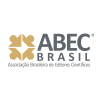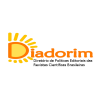EVALUACIÓN DE LA CURVATURA RADICULAR DE LA RAIZ MESIO VESTIBULAR DEL PRIMER MOLAR INFERIOR
Samenvatting
Trefwoorden
Volledige tekst:
PDF (Português (Brasil))Referenties
ABESI F.; EHSANI, M. Radiographic evaluation of maxillary anterior teeth canal curvatures in an Iranian population. IEJ, v. 6, n. 1, p. 1-3, 2011.
ABOU-RASS, M.; JASTRAB, R. J. The use of rotary instruments as auxiliary aids to root canal preparation of molars. J Endodon, v. 8, p. 78-82, 1982.
AMINSOBHANI, M.; SADEGH, M.; MERAJI, N.; RAZMI, H. & KHARAZIFARD, M. J. Evaluation of the root and canal morphology of mandibular permanent anterior teeth in an Iranian population by cone-beam computed tomography. J. Dent. (Tehran), v. 10, n. 4, p. 358-66, 2013.
CAVIEDES BUCHELI, M. M.; AZUERO HOLGUÍN, A.; MUÑÓZ, S. Manejo de conductos curvos y estrechos con instrumentos rotatorios Mtwo. Endodoncia, v. 27, n. 2, p. 86-92, 2009.
COLAK, H.; BAYRAKTAR, Y.; HAMIDI, M. M.; TAN, E.; COLAK, T. Prevalence of root dilacerations in Central Anatolian Turkish dental patients. West Indian Med. J., v. 61, n. 6, p. 635-9, 2012.
FOREST, D.; MOUYEN, F. GIROUX, S. SOKOLOFF, S. La RVG, dosimetrie comparative. vID, 1990.
HORNER, K., SHEARER, A. C.; WALKER, A. y col. Radiovisiography: an initial evaluation. Br. Dent. J., n. 168, p. 244-248,1990.
KIRCHHOFF, A. L.; CHU, R.; MELLO, I.; GARZON, A. D.; DOS SANTOS, M.; CUNHA, R. S. Glide path management with single- and multiple-instrument rotary systems in curved canals: A micro-computed tomographic study. J. Endod., v. 41, n. 11, p.1880- 3, 2015.
Lang H, Kormas Y, Schneider K, Raab W H. Impact of endodontic tratments on the rigidity of the root. J Dent Res. 2006; 85 (4): 364 – 68.
LEONARDO, M.R.; CARNEIRO M. V. Acceso Cameral (cirugía de acceso). In: Endodoncia. Tratamiento de conductos radiculares. Principios técnicos y biológicos. São Paulo: Artes médicas latino-americanas, 2005.
LOPREITE, G. H. BASILAKI, J. M. Anatomía quirúrgica. In: LOPREITE, G. H.; BASILAKI, J. M. et al. Endodoncia. Criterios técnicos y terapéuticos. Grupo Guía S. A., 2016.
BRAMANTE, C. M. et al. Acidentes y complicações na instrumentação. In: Acidentes e complicações no tratamento endodôntico. 2. ed. São Paulo: Santos; 2004. p 59 – 106.
MOUYEN, F., BENZ, S. E. et al. Presentation and physical evaluation of Radio Visiography. Oral Surg. Oral Med. Oral Pathol., v. 68, p. 238-242, 1989.
MULLANEY, T. P. Instrumentation of finely curves canals. Dent Clin Nort Am., v. 23, n. 4, p. 575- 85, 1979.
NAGY, C. D. et al. The effect of root canals morphology on canal shape following instrumentation using different techniques. Int Endod J., v. 30, p. 559 -67, 1997.
NAGY, C. D.; SZABÓ, J, SZABÓ, J. A mathematically based classification of root canal curvatures on natural human teeth. J Endodon., v. 25, n. 11, p. 557-60, 1995.
PEREIRA, H.; NELSON, E.; ESTRELA, C.; SIQUEIRA, F. Assesment of the apical transportation of root Canals using the method of curvature radius. Braz Dent J., v. 9, n. 1, p. 39-45, 1998.
PETERS, O. A. Current Challenges and concepts in the preparation of root canals systems: a review. J Endod., v. 30, n. 8, p. 559- 67, 2004.
QUING-HUA, Z. et al. Radiographic Investigation of Frequency and Degree of Canal Curvatures in Chinese Mandibular Permanent. JOE, v. 35, n. 2, p. 175-7, 2009.
RAZZANO, M. Radiovisiography: instant Radiographic images aid implant treatment, Maintance. The implants Society, v. 2, n. 2, p. 12-14, 1991.
ROIG-CAYÓN, M.; BASILIO-MONNÉ, J.; ABÓS-HERRÁNDIZ, R., BRAU-AGUADÉ, E.; CANALDA-SAHLI, C. A comparison of molar root canal preparation using six intruments and instrumentation techniques. J Endon., v. 23, n. 6, p. 383-7, 1997.
ROLG-CAYON, M.; BASILLO-MONNE, J.; ABOS-HERRANDIZ, R.; BRAU-AGUADE, E. CANALDA SHALI, C. A comparison of molar root canal preparation using six instruments and instrumentation techniques. J Endod., v. 23, n. 6, p. 383-7, 1997.
SASAKI, T. Impact of innovation on image technology on inicaldentistry. The Quintessence, v. 10, n. 4,p. 620-628, 1991.
SCHÄFER, E.; DIEZ, C.; HOPPE, W.; TEPE, J. Roentgenographic investigation of frequency and degree of canal curvatures in human permanent teeth. JOE, v. 28, n. 3, p. 212-15, 2002.
SCHNEIDER, S. W. A comparison of canal preparations in straight and curved root canals. Oral Surg Path Oral Med., p. 271- 5, 1971.
SHEARER, A. C.; HOMET, K.; WILSON, N. H. F. Radiovisiografía de imagen de conductos radiculares. Comparación in vitro con la radiografía convencional. Quintessence Int., v. 21, p. 789-794, 1990.
SHIVA, S. A novel approach in assessment of root canal curvature. IEJ, v. 4, n. 4, 2009.
SOARES, I.; GOLDBERG, F. Endodoncia. Técnica y Fundamento. 1. ed. Buenos Aires: Ed. Panamericana, 2002.
SZWOM, R.; RACCA, S. Limpieza y conformación del sistema de conductos radiculares. Evaluación in vitro de un agente lubricante líquido. IUNIR, 2016. 181p.
WEINE, F. Preparación de la cavidad de acceso y tratamiento inicial. Terapéutica en Endodoncia. 2. ed. Madrid: Hartcourt Brace, 1996.
WEST, J. D. The Endodontic Glidepath: “Secret to rotary safety “. Dent Today, v. 29, n. 9, p. 86, 88, 90-93, sep. 2010.
WILLERSHAUSEN, B.; TEKYATAN, H. KASAJ, A.; BRISEÑO, B. Roentgenographic In Vitro investigation of frequency and location of curvatures in human maxillary premolars. JOE, v. 32, n. 4, p. 307-8, 2006.
WU, M. K. et al. Leakage along apical root fillings in curved root Canals. J Endod., v. 26, n. 4, p. 210-16, 2000.
ZHU, Y-Q.; GU, Y-X.; DU, R.; LI, C. Reliability of two methods on measuring root canal curvature. Int Chin J Dent., p. 118-20, 2003.
DOI: http://dx.doi.org/10.25191/recs.v5i1.3602
Copyright (c) 2020 Revista Expressão Católica Saúde
ISSN: 2526-964X
| Revista Associada |
|---|
 |
 |
| Indexadores | |||||||
|---|---|---|---|---|---|---|---|
 |
 |
 |
 |
 |
 |
 |
 |
 |

